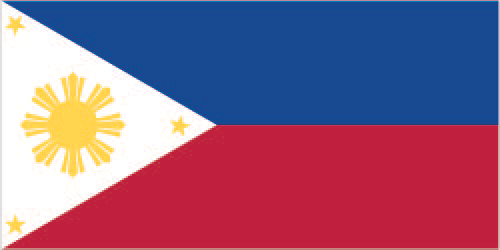
The economy has weathered global economic and financial downturns better than its regional peers due to minimal exposure to troubled international securities, lower dependence on exports, relatively resilient domestic consumption, large remittances from four- to five-million overseas Filipino workers, and a rapidly expanding business process outsourcing industry. The current account balance had recorded consecutive surpluses since 2003; international reserves are at record highs; the banking system is stable; and the stock market was Asia's second best-performer in 2012. Efforts to improve tax administration and expenditure management have helped ease the Philippines' tight fiscal situation and reduce high debt levels. The Philippines has received several credit rating upgrades on its sovereign debt, and has had little difficulty tapping domestic and international markets to finance its deficits. Economic growth in the Philippines averaged 4.5% during the MACAPAGAL-ARROYO administration, but poverty worsened during her term. Growth has accelerated under the AQUINO government, but with limited progress thus far in bringing down unemployment, which hovers around 7%, and improving the quality of jobs. Underemployment is nearly 20% and more than 40% of the employed are estimated to be working in the informal sector. The AQUINO administration has been working to boost the budgets for education, health, cash transfers to the poor, and other social spending programs, and is relying on the private sector to help fund major infrastructure projects under its Public-Private Partnership program. Long term challenges include reforming governance and the judicial system, building infrastructure, improving regulatory predictability, and the ease of doing business, attracting higher levels of local and foreign investments. The Philippine Constitution and the other laws continue to restrict foreign ownership in important activities/sectors (such as land ownership and public utilities).
$454.3 billion (2013 est.)
country comparison to the world: 32
$425.3 billion (2012 est.)
$398.2 billion (2011 est.)
6.8% (2013 est.)
country comparison to the world: 27
6.8% (2012 est.)
3.6% (2011 est.)
$4,700 (2013 est.)
country comparison to the world: 165
$4,400 (2012 est.)
$4,200 (2011 est.)
agriculture: 11.2%
industry: 31.6%
services: 57.2% (2013 est.)
26.5% (2009 est.)
2.8% (2013 est.)
country comparison to the world: 110
3.2% (2012 est.)
41.33 million (2013 est.)
country comparison to the world: 16
agriculture: 32%
industry: 15%
services: 53% (2012 est.)
7.4% (2013 est.)
country comparison to the world: 81 7% (2012 est.)
electronics assembly, garments, footwear, pharmaceuticals, chemicals, wood products, food processing, petroleum refining, fishing
9% (2013 est.)
country comparison to the world: 19